The medieval period began around the late 5th century as the Roman Empire collapsed. Also known as the Middle Ages, the way of life began to change throughout Europe and the rest of the known world. Kings and Queens ruled over their respective countries with iron fists as they conquered nearby lands. Technology was still primitive but new tools and devices emerged throughout that period. During that time, breaking any laws often resulted in executions. No matter the severity of the crime, the solution was usually death. However, these medieval executions were nothing like the modern-day versions.
Medieval executions weren’t just about killing the criminal but inflicting as much torture and pain as possible. In the Middle Ages, the practices of executions were usually cruel, violent, and graphic. Most of the executions took place publicly as a warning not to make the same mistake. Despite the brutality, these warnings worked, as few were willing to break the laws set in place.
In the present-day, lethal injection is the standard method of capital punishment in places where it’s legal, a much more humane way to be put to death. Let’s venture to the Middle Ages and explore the evilest and most torturous medieval executions that were terrible ways to die.
Medieval Executions: 13 Horrible Ways To Die
1. Hanged, Drawn, and Quartered
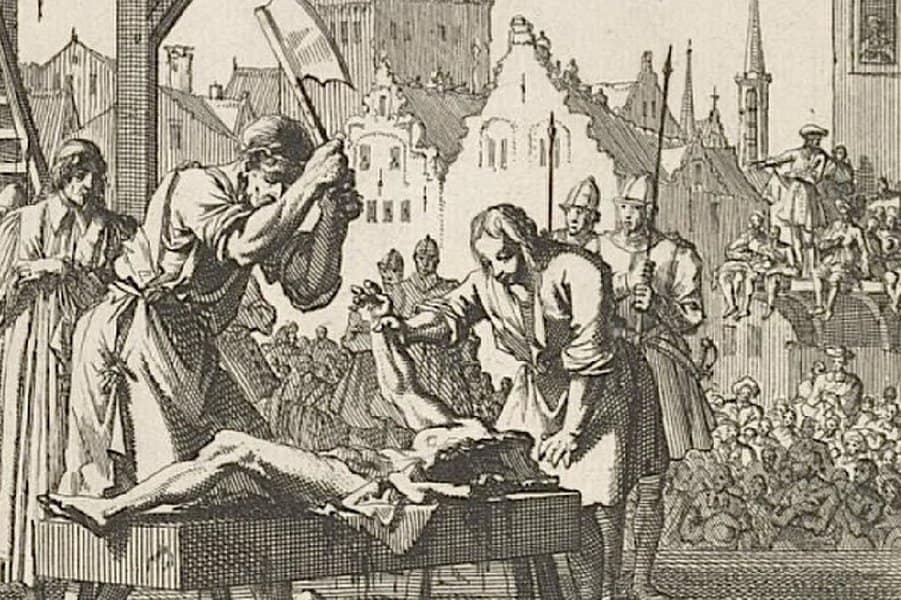
MedievalMadness/YouTube
There was no crime worse than high treason during the medieval period. Therefore, the execution had to be the worst punishment imaginable. That’s why the Kingdom of England employed the hanged, drawn, and quartered method.
The traitor would be attached to a wooden board and drawn by horse to the site of execution. Next, they suffered through brutal hanging until near death. At that point, the executioners cut the traitor down, disembowel them, and emasculated them. The traitor was then beheaded and quartered into four pieces. The body parts were then dipped in tar and displayed at London Bridge as a warning to other traitors.
Famously, King Edward I had Scottish knight William Wallace hanged, drawn, and quartered for leading the first Scottish Rebellion. Female traitors suffered through public burnings at the stake as their punishment.
2. The Judas Cradle
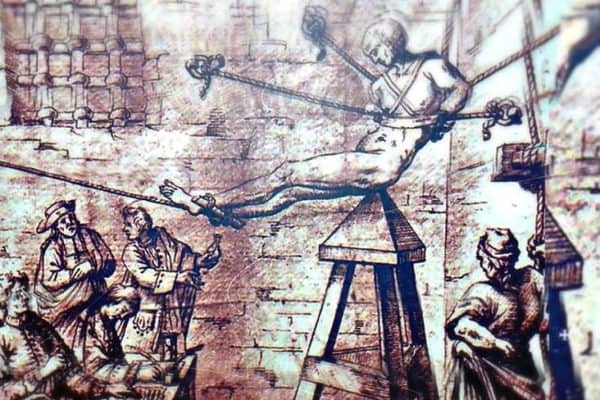
Ridddle/YouTube
The Judas Cradle was one of the Middle Ages’ most disturbing torture and execution devices. During the Spanish Inquisition, the Judas Cradle became a popular method of torture. The horrifying device was a tall stool with a wooden or metal pyramid on the top. The executioners slowly lowered the prisoner onto the sharp end of the device.
Often they would cover the pyramid in olive oil and add weights to the ankles to make the process even more disturbing. The torture continued until finally, the executioner impaled the victim causing death.
3. Beheading
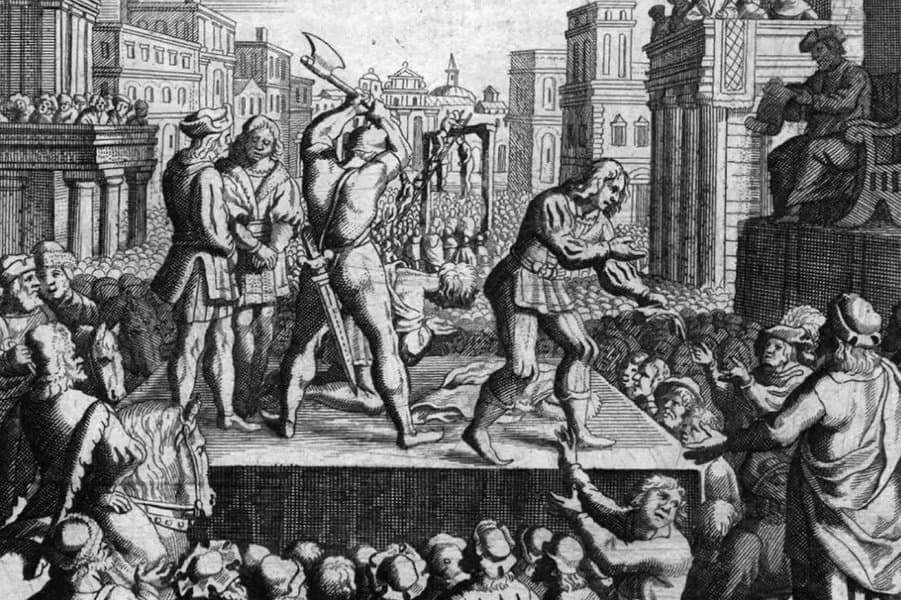
Foreign Field Living History/YouTube
During the Middle Ages, the population viewed beheadings as the most humane form of execution. Many considered it the most honorable way to be publicly executed. Initially, beheadings were done with an axe, leading to gruesome public deaths. Later, the sword took the place of the axe for a more accurate beheading.
After the Middle Ages, beheadings continued to occur throughout Europe. King Henry VIII famously had his then-wife and Queen of England, Anne Boleyn, arrested and executed for various supposed crimes. The King commuted Anne’s sentence to a beheading instead of a public burning. Henry even brought in an expert French swordsman to perform the public beheading of Anne Boleyn on May 19, 1536.
4. Hanging
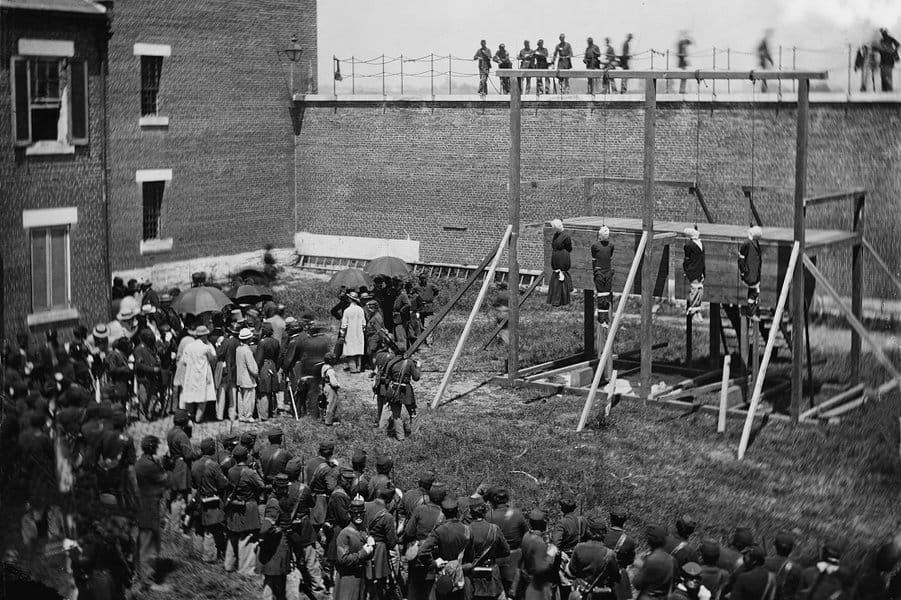
Shuttertstock
Throughout Europe, hangings were an accepted form of execution during the Middle Ages. Gallows were erected in various countries to hang offenders from and display them as a warning.
One of the most famous gallows was the Gibbet on Montfaucon in Paris, France. The three-sided structure had 45 compartments for hangings and displaying the offenders. It became a popular form of punishment for treason during the reign of King Louis IX and King Charles IV.
5. Burning at the Stake
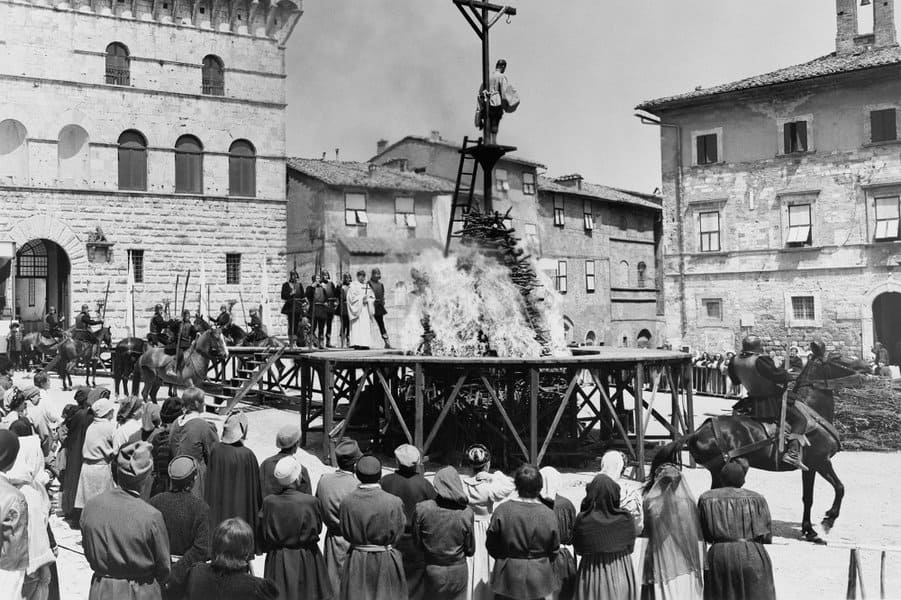
Shutterstock
Death by burning has been a form of execution for centuries. It became widely popular throughout Europe in the Middle Ages. The most common version was burning at the stake. In this case, the victim was tied to a large stake with a fire lit beneath them. They would burn to death in front of the public as a warning against committing crimes.
One of the most popular forms of capital punishment in the medieval period, authorities would burn heretics at the stake for committing crimes of witchcraft, treason, and hearsay.
6. Rat Torture

Top10Greatest/YouTube
During the Middle Ages, rat torture became a popular form of capital punishment. There were several different variations of rat torture. Rumors suggest that guards at the Tower of London would open the gates from the River Thames, allowing hundreds of rats to enter. They often attacked the prisoners in the Tower and infected them with deadly diseases.
Rat torture evolved during the Dutch Revolt. Torturers would place rats in a pottery bowl and turn it upside down onto the prisoner’s body. They would then heat the bowl, causing the rats to gnaw at the body in an attempt to escape.
See more about - 20 Terrifying Torture Devices That Will Give You the Creeps
7. Breaking Wheel
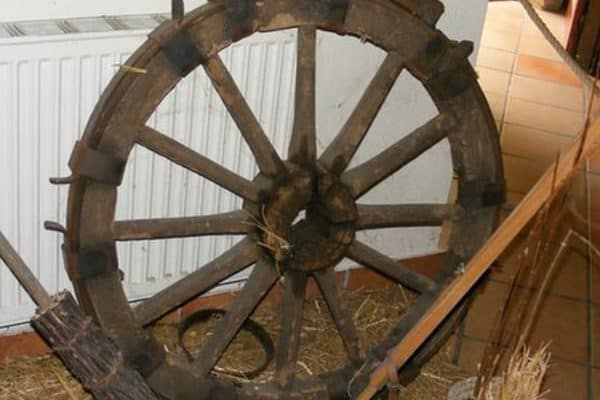
Marshall’s Docs/YouTube
In Late Antiquity, the breaking wheel tortured and killed hundreds of prisoners and criminals. Throughout the Middle Ages, the device became commonplace and an accepted form of capital punishment.
The process was simple for the executioners. They simply tied the criminal to a giant wooden spoked wheel, usually in a public area, that often contained a sharp blade around the inner rim for added torture.
The first phase of the breaking wheel focused on maiming the body and breaking bones, starting with the legs. The next phase involved a second wheel, a public display, and the final execution.
8. Sawing
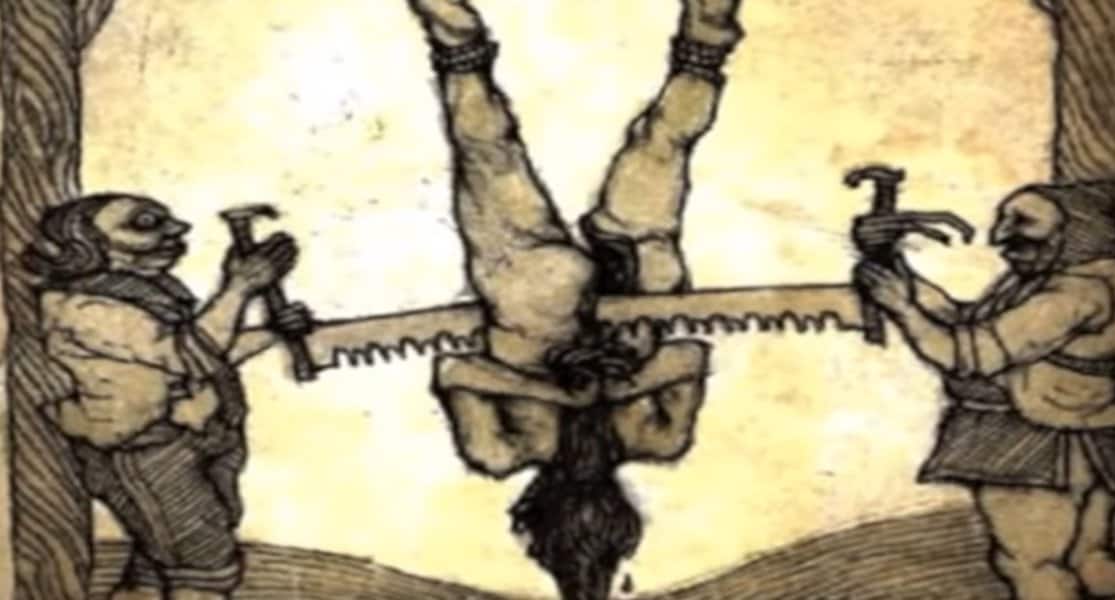
List 25/YouTube
Executioners often used basic tools, such as the saw, to ensure the execution was as painful as possible. Death by saw was one of the most brutal forms of capital punishment. While it was popular during the medieval period, many different kingdoms employed the death-by-saw method.
There were various methods of death by saw. The Moroccans cut a person from the skull down lengthwise, while the Romans would cut the victim in half widthwise. One method even involved the victim being hung upside down and slowly cut half downward.
9. Head Crusher
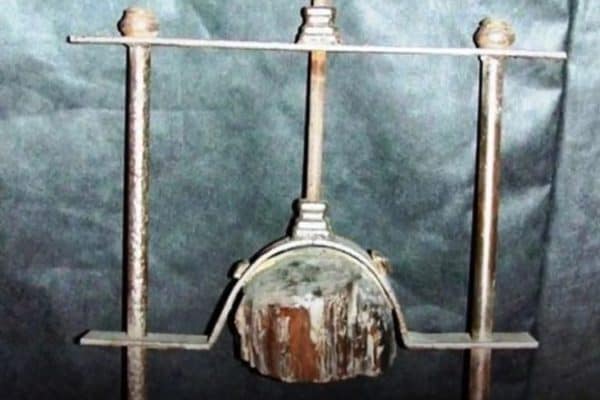
Top10Greatest/YouTube
The torture devices became even more gruesome and brutal in the late Middle Ages. By that point in history, people weren’t interested in handing out humane deaths. The executioners went out of their way to inflict as much pain as possible. The head crusher was a devastating device with a metal plate that sat below a person’s jaw.
The plate was connected to a head cap with a screw. The executioner would turn the screw, tightening the cap and crushing the skull. However, they would take their time and slowly destroy the skull, crushing the teeth and shattering facial bones. After prolonged suffering, the executioner finally put them out of their misery.
10. Execution by Elephant
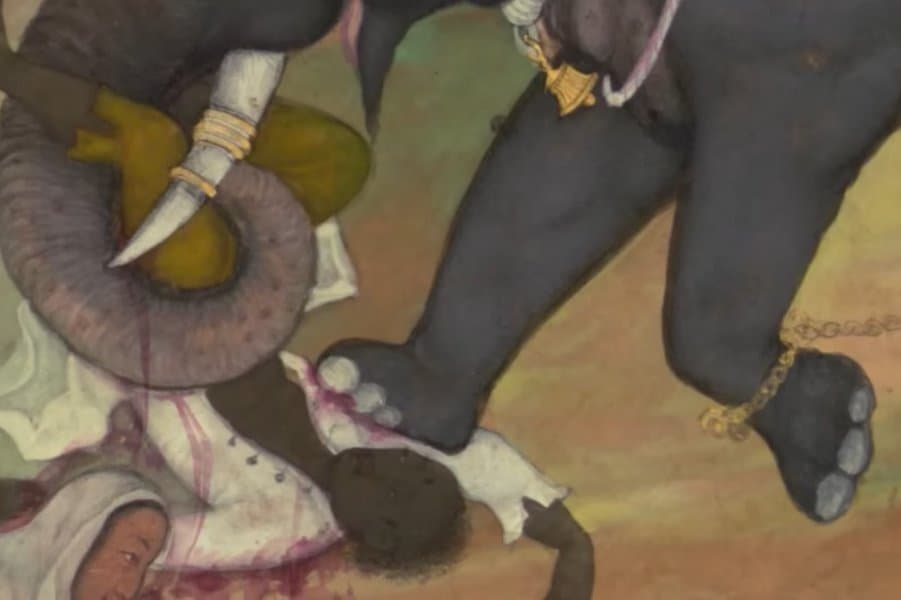
Origins Explained/YouTube
Asia had their own methods of execution during the Middle Ages. Execution by an elephant was undoubtedly one of the most violent and brutal methods.
In India, royalty often used elephants to execute anyone they considered a criminal. They usually trained the elephants to torture a person or kill them instantly on command. Unlike other executions, if the person begged for forgiveness enough, the ruler would halt the process, proving the power they held over life.
11. Death by Boiling
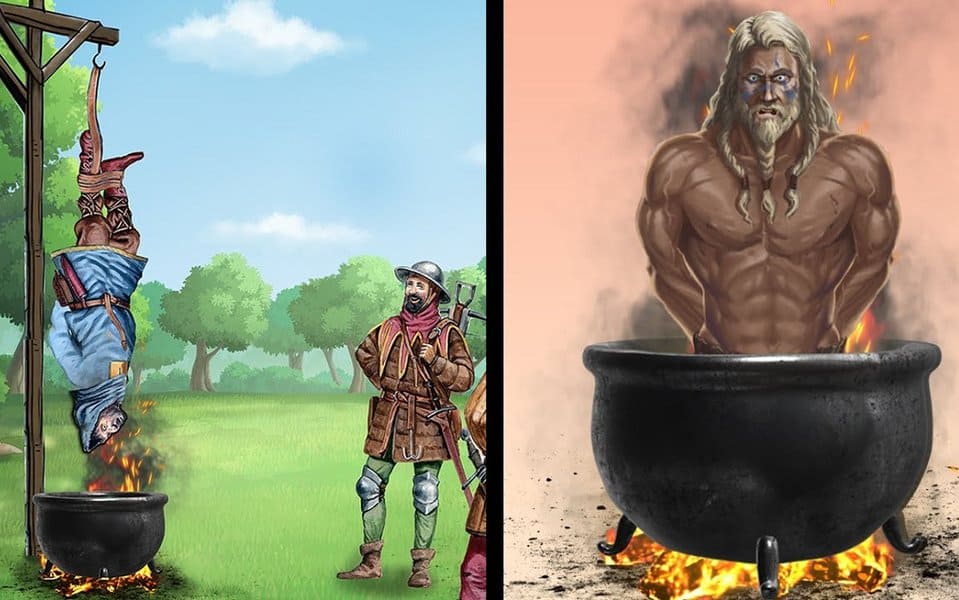
williamdefalco/YouTube
Even by medieval standards, death by boiling is cruel and barbaric. It was the least common method of execution and only appeared a few times throughout history. In Europe, King Henry VIII made boiling by death the punishment for poisoning.
Boiling by death was also a common form of execution in Japan and India. The method involved sealing the victim inside a large cauldron with water, tar, or oil. At that point, the torturer turned the heat up, causing a slow and painful death.
12. Immurement
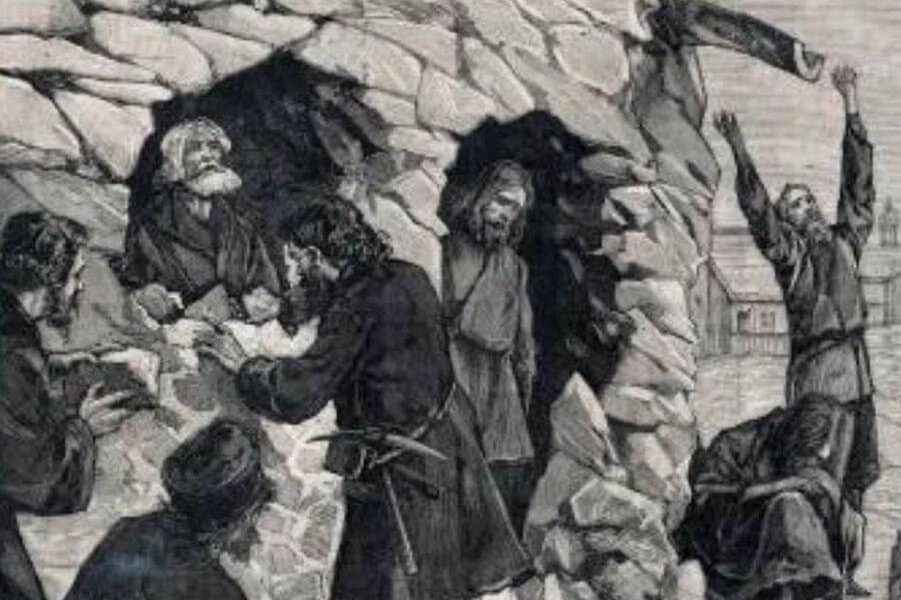
williamdefalco/YouTube
Immurement combines imprisonment, torture, and death into one heartless execution. Also known as a live entombment, it was commonplace throughout Europe and Asia. There were two popular forms of immurement.
In the Roman Empire and parts of Europe, immurement was the punishment for women found guilty of breaking their chastity vows. The guilty party was essentially buried alive in the wall of a castle. Eventually, they died from dehydration and starvation.
Another form of immurement was imprisonment inside a coffin. Regardless if it was a wall or a coffin, confinement in a small space was a terrible way to die.
13. Impalement
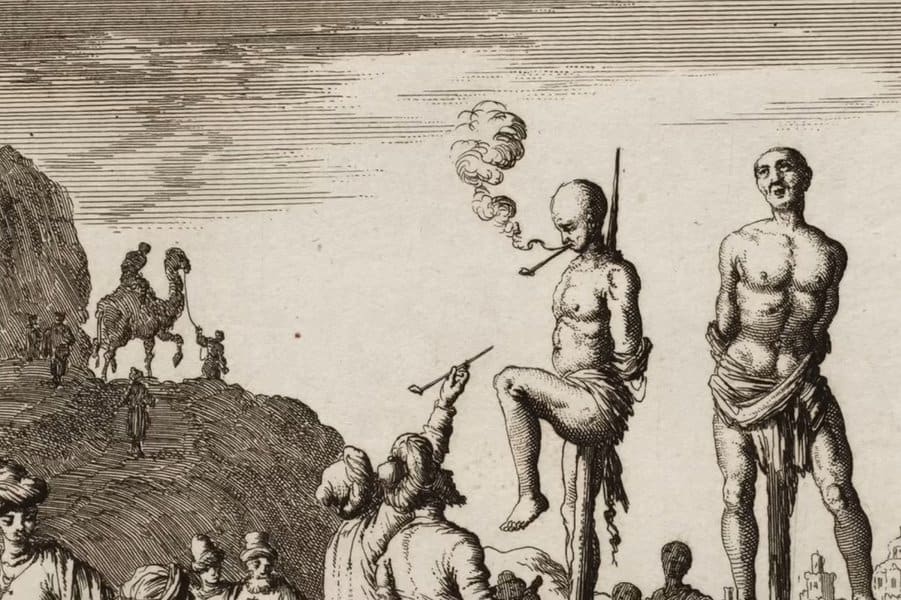
TheFortress/YouTube
There were several brutal and violent forms of capital punishment practiced throughout Europe, the Middle East, and Asia in the Middle Ages. Everyone agrees that impalement was the cruelest and harshest form of execution. It was the most common form of punishment for crimes against the state. The method was standard during wars to punish traitors and suppress rebellions.
After their violent deaths, the victim’s bodies would rot on stakes in the hot sun as a warning to other traitors and rebels. It involved a stake, hook, spear, or pole penetrating the torso. Death could take hours or occur instantly. It was a violent, brutal, and inhumane form of torture and execution.
See more about - 21 Gruesome Medieval Torture Devices
